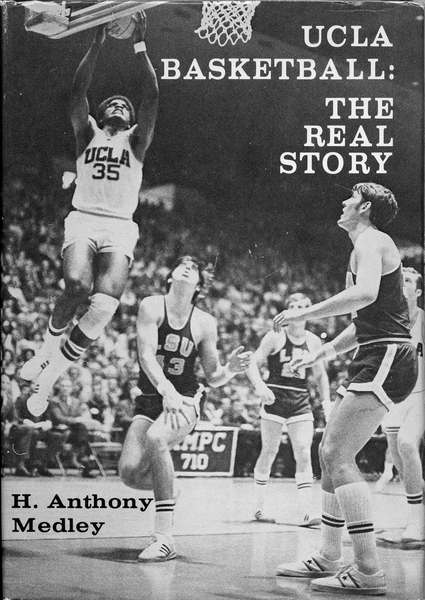|
Out of print for more than 30 years, now available for the first time as an eBook, this is the controversial story of John Wooden's first 25 years and first 8 NCAA Championships as UCLA Head Basketball Coach. This is the only book that gives a true picture of the character of John Wooden and the influence of his assistant, Jerry Norman, whose contributions Wooden ignored and tried to bury. Compiled with more than 40 hours of interviews with Coach Wooden, learn about the man behind the coach. The players tell their stories in their own words. Click the book to read the first chapter and for ordering information. Also available on Kindle. |
|
Sports Medley: More reasons why today’s baseball stinks: 25 Jul 16 by Tony Medley ESPN’s Buster Olney, a talking head “baseball expert,” opined that calling balls and strikes by some sort of computerized procedure would not make baseball better because “it’s not accurate enough.” What? Does Olney think that Umpires calling balls and strikes are more accurate than the graphic indications of ball placement shown on most of today’s telecasts (not Sportsnet LA, unfortunately, because they refuse to show it on every pitch)? Olney’s position is absurd. Here’s an example of how the horribly inaccurate calling of balls and strikes by umpires can affect a game. In the top of the eighth inning of Friday’s game between the Dodgers and the Cardinals and the score tied 2-2 with two men out for the Dodgers and Andres Toles on first base, the count was 2 balls and no strikes on Chase Utley. The pitcher, Jonathan Broxton, threw a ball that was 6 inches below Utley’s knees and 3 inches outside the strike zone that the umpire, Mike Eastabrook, called a strike. So instead of the count being 3-0, it was 2-1. Utley fouled off the next pitch (which with the count 3-0 he probably would have taken) to make the count 2-2, then had to swing at the identical low, outside pitch that Eastabrook had already called a strike once, to strikeout. Utley had to swing at it because Eastabrook had told him on that night, that pitch was a strike. Had the pitches been called by computer, Utley would have walked. So instead of the Dodgers having men on first and second with two out and their best hitter, Corey Seager (who already had 4 hits in the game) coming up, they were out of the inning. This isn’t a criticism of the umpire, who was looking over Cardinal Catcher Yadier Molina’s, right shoulder and couldn’t possibly have seen the pitch location as it approached the plate because it was low and outside to his left on the other side of Molina, and he was completely blocked by the catcher. He could not have seen whether it was low, nor could he have seen whether it was outside because he was completely blocked. The home plate umpire is in the worst location to determine balls and strikes. He would be better positioned if he stood behind the pitcher, where they stood at the dawn of baseball back in the early 1900s, and where they generally stood when I played in high school. For Olney and others to reject automatized ball and strike calling because it’s “not accurate enough” can’t stand up when compared with the lack of accuracy of the umpires calling them manually. The calling of balls and strikes is the essence of baseball. It is unfair in the extreme for games to be decided every day by this imperfect procedure. Baseball needs to automatize it, and it needs to do it now. Another Example of how things have changed for the worse: The Dodgers and Cardinals took 3 hours and 49 minutes to play Sunday’s 9 inning game, using ten pitchers. The final game of the 1908 World Series between the Cubs and the Tigers was 1 hour 29 minutes. In a five game series, only 10 pitchers were used by both teams, total; with six pitchers throwing complete games. Dodgers’ rookie manager Dave Roberts often sends a pinch hitter up for his pitcher in the sixth inning, puts another pitcher in to start the seventh, and then changes pitchers after one batter, even if that batter struck out. Not only is there no justification for such arbitrary changing of pitchers, it slows the game down to a crawl. At the end of Sunday’s game, there couldn’t have been 20% of the fans in the stands who were there when the game started. Since there is no hope for any manager in today’s game to eschew the sabermetricians and their lying numbers, MLB should institute a rule in which there may be no more than one pitching change per inning and every pitcher must pitch to at least three batters. But as I’ve said many times in the past when I’ve proposed changes, don’t hold your breath. Any commissioner daft enough to base home field advantage on who wins the All Star game isn’t going to make any change that actually has merit. |
|
|
